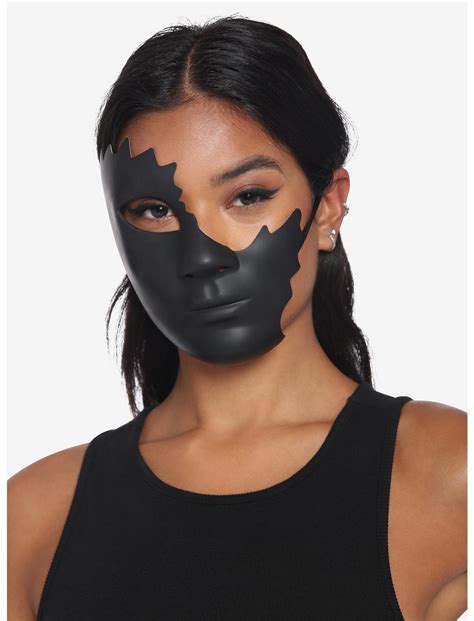The concept of a half mask, also known as a half-face mask or half-face respirator, is a crucial aspect of personal protective equipment (PPE) in various industries, including healthcare, construction, and manufacturing. A half mask is designed to cover the nose and mouth, providing a barrier against airborne contaminants, such as dust, mist, and fumes. In this article, we will delve into the world of half masks, exploring their history, design, and application in different fields.
Key Points
- The half mask is a type of respirator that covers the nose and mouth, providing protection against airborne contaminants.
- Half masks are used in various industries, including healthcare, construction, and manufacturing, to prevent the inhalation of hazardous substances.
- The design of half masks has evolved over time, with modern models featuring advanced filtration systems and improved comfort.
- There are different types of half masks, including disposable and reusable models, each with its own advantages and disadvantages.
- The selection of a half mask depends on various factors, including the type of contaminant, the level of protection required, and the user's personal preferences.
History and Evolution of Half Masks

The use of half masks dates back to the early 20th century, when they were first introduced in the mining industry to protect workers from inhaling dust and other airborne contaminants. Over the years, the design and materials used in half masks have undergone significant changes, driven by advances in technology and the need for improved protection. Today, half masks are made from a variety of materials, including rubber, silicone, and plastic, and feature advanced filtration systems that can capture particles as small as 0.3 microns.
Design and Components of Half Masks
A half mask typically consists of a facepiece, a filter or cartridge, and a strap or harness. The facepiece is the part of the mask that covers the nose and mouth, and is usually made of a flexible material that conforms to the shape of the face. The filter or cartridge is the component that captures airborne contaminants, and is typically made of a fibrous material or a combination of materials. The strap or harness is used to secure the mask to the head, and may be adjustable to fit different head sizes.
| Type of Half Mask | Filtration Efficiency | Applications |
|---|---|---|
| Disposable Half Mask | 95-99.97% | Healthcare, construction, manufacturing |
| Reusable Half Mask | 99-99.99% | Industrial, agricultural, and other high-risk environments |

Types of Half Masks and Their Applications

There are different types of half masks, each designed for specific applications and industries. Disposable half masks are commonly used in healthcare and construction, where the risk of exposure to airborne contaminants is high. Reusable half masks, on the other hand, are often used in industrial and agricultural settings, where the mask is worn for extended periods and needs to be cleaned and maintained regularly.
Standards and Certifications for Half Masks
Half masks are subject to various safety standards and certifications, including those set by the National Institute for Occupational Safety and Health (NIOSH) and the Occupational Safety and Health Administration (OSHA). These standards ensure that half masks meet specific requirements for filtration efficiency, breathing resistance, and other performance criteria. When selecting a half mask, it is essential to look for certifications and compliance with relevant safety standards.
What is the difference between a half mask and a full-face mask?
+A half mask covers the nose and mouth, while a full-face mask covers the entire face, including the eyes and forehead. Full-face masks provide greater protection against airborne contaminants and are often used in high-risk environments.
How often should I replace my half mask filter?
+The frequency of replacing a half mask filter depends on various factors, including the type of filter, the level of use, and the environment in which it is used. Generally, filters should be replaced after 8-12 hours of use or when they become damaged or soiled.
Can I use a half mask in a high-risk environment?
+Yes, half masks can be used in high-risk environments, but it is essential to choose a mask that meets the relevant safety standards and is designed for the specific application. Additionally, users should follow proper donning and doffing procedures and ensure a proper fit to prevent exposure to airborne contaminants.
In conclusion, half masks are a crucial aspect of personal protective equipment in various industries, providing protection against airborne contaminants and helping to prevent respiratory diseases. By understanding the history, design, and application of half masks, users can make informed decisions when selecting a mask and ensure a safe and healthy working environment.
